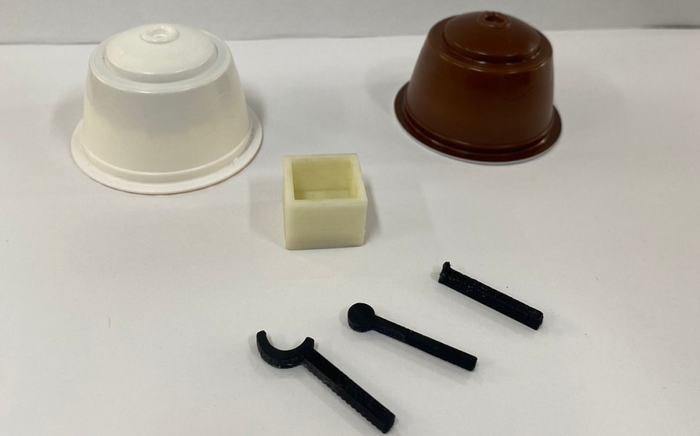Researchers from Brazil and the UK have revealed in a technical paper how plastic in used coffee pods can be recycled filament for 3D printers.
“We produced new conductive and non-conductive filaments from waste polylactic acid [PLA] from used coffee machine pods. There are many applications for these filaments, including conductive parts for machinery and sensors,” Bruno Campos Janegitz, a co-author of the article, told Agência FAPESP. Janegitz heads the Sensors, Nanomedicine and Nanostructured Materials Laboratory (LSNano) at UFSCar in Araras, São Paulo state.
Janegitz heads the Laboratory of Sensors, Nanomedicine and Nanostructured Materials (LSNano) at UFSCar in Araras, São Paulo state.
As the world’s leading coffee producer and exporter, Brazil is particularly confronted with the question of what to do with used coffee pods. Although reusable pods are available, many of them, especially plastic pods, end up in the trash.
Researchers* developed electrochemical cells and sensors from the recycled PLA filaments. The manufacturing process is relatively simple and represents a good example of a circular economy.
“The electrochemical sensors were used to determine the proportion of caffeine in black tea and arabica coffee,” Janegitz explained.
This groundbreaking work is the result of international collaboration, including the participation of Cristiane Kalinke, who holds a PhD in analytical chemistry and conducts research at UNICAMP, and Craig Banks, professor at Manchester Metropolitan University.
Subscribe to our Newsletter
3DPresso is a weekly newsletter that links to the most exciting global stories from the 3D printing and additive manufacturing industry.






















